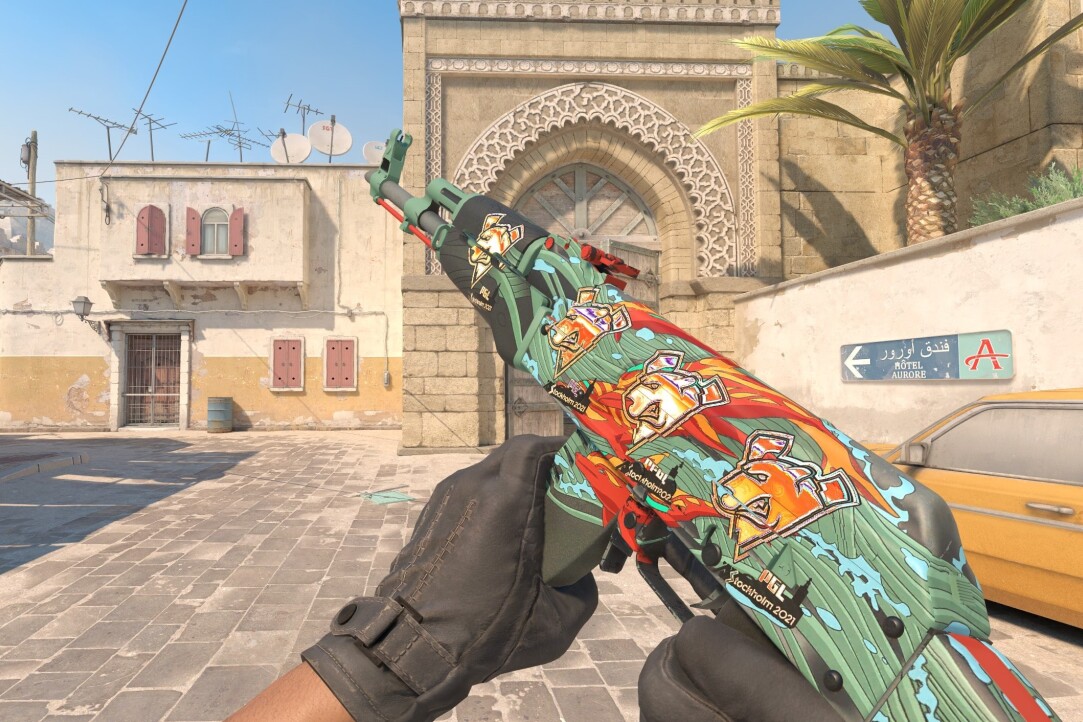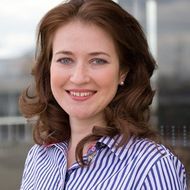HSE Researchers Find Counter-Strike Skins Outperform Bitcoin and Gold as Alternative Investments

Virtual knives, custom-painted machine guns, and gloves are common collectible items in videogames. A new study by scientists from HSE University suggests that digital skins from the popular video game Counter-Strike: Global Offensive (CS:GO) rank among the most profitable types of alternative investments, with average annual returns exceeding 40%. The study has been published in the Social Science Research Network (SSRN), a free-access online repository.
Investors have long sought after assets that are insulated from stock market fluctuations, especially during times of instability. This has fuelled a boom in alternative investments, with people putting their money into art, fine wine, and vintage cars. Videogame skins can now be confidently added to this list, offering not only aesthetic appeal but also impressive financial returns.
Skins are virtual items that alter the appearance of in-game objects, such as weapons or characters. While they don’t usually impact gameplay or a player’s chances of winning, they allow users to express their individuality. Skins range from simple designs to rare collectibles that can be bought, traded, or sold on specialised online platforms. The most sought-after and rare skins have become the foundation of a new investment trend.
The study by Victoria Dobrynskaya, Associate Professor at the Faculty of Economic Sciences of HSE University, and Vladimir Strelnikov, her former student, now a master's student at New Economic School, suggests that digital collectibles from the videogame Counter-Strike: Global Offensive (CS:GO) can yield average annual returns of over 40%.
To assess the investment appeal of CS:GO skins, the researchers analysed data on nearly 5,000 unique in-game items traded on the Steam platform between 2013 and 2024.
The study found that skins are among the top-performing assets in terms of the risk–return ratio. The average annual return on a portfolio of skins was 41.2%, which is several times higher than that of the US stock market (CRSP), real estate (REITs), bonds or gold. While their profitability is comparable to Bitcoin, skins exhibit significantly lower volatility.
According to the analysis, the average skin price was $155, but the distribution was highly skewed, with most items priced significantly lower. The median price was just $11.50, while the most expensive skin in the Steam sample sold for nearly $4,000.
'On average, a skin is traded 800 times per month, with Steam charging a 15% fee on each transaction. As a result, frequent trading is generally unprofitable, making long-term investment in these assets optimal,' explain Dobrynskaya and Strelnikov.
'The Sharpe ratio for skins is 0.34, indicating a favourable return-to-risk profile. For comparison, during the same period, the Sharpe ratios were 0.25 for the CRSP, 0.12 for gold, and 0.21 for Bitcoin. A higher Sharpe ratio signifies better investment performance. While there are no guarantees, we have observed data spanning over a decade, during which most skins have steadily increased in value,' notes Dobrynskaya.
The skin market proved to be largely insensitive to market risks, with the most profitable assets being inexpensive items: common skins of around $2.25 in price generate average monthly returns of nearly 19%. In contrast, rare and expensive skins priced at around $1,700 yield monthly returns below 3%, which is still higher than the average returns of the stock market. As a result, strategies that prioritise marketable, liquid items rather than rare collectibles demonstrate the best performance.
'In-game collectibles are more than just pixels—they are genuine financial instruments that help diversify portfolios and hedge against volatility. At the same time, the market is liquid and transparent, with a capitalisation exceeding $4 billion. This market remains relatively unknown to outside investors, and most skin investments come from actual players. Long-term investment in skins is a common practice among them,' Dobrynskaya and Strelnikov comment.
See also:
Scientists Test Asymmetry Between Matter and Antimatter
An international team, including scientists from HSE University, has collected and analysed data from dozens of experiments on charm mixing—the process in which an unstable charm meson oscillates between its particle and antiparticle states. These oscillations were observed only four times per thousand decays, fully consistent with the predictions of the Standard Model. This indicates that no signs of new physics have yet been detected in these processes, and if unknown particles do exist, they are likely too heavy to be observed with current equipment. The paper has been published in Physical Review D.
HSE Scientists Reveal What Drives Public Trust in Science
Researchers at HSE ISSEK have analysed the level of trust in scientific knowledge in Russian society and the factors shaping attitudes and perceptions. It was found that trust in science depends more on everyday experience, social expectations, and the perceived promises of science than on objective knowledge. The article has been published in Universe of Russia.
Scientists Uncover Why Consumers Are Reluctant to Pay for Sugar-Free Products
Researchers at the HSE Institute for Cognitive Neuroscience have investigated how 'sugar-free' labelling affects consumers’ willingness to pay for such products. It was found that the label has little impact on the products’ appeal due to a trade-off between sweetness and healthiness: on the one hand, the label can deter consumers by implying an inferior taste, while on the other, it signals potential health benefits. The study findings have been published in Frontiers in Nutrition.
HSE Psycholinguists Launch Digital Tool to Spot Dyslexia in Children
Specialists from HSE University's Centre for Language and Brain have introduced LexiMetr, a new digital tool for diagnosing dyslexia in primary school students. This is the first standardised application in Russia that enables fast and reliable assessment of children’s reading skills to identify dyslexia or the risk of developing it. The application is available on the RuStore platform and runs on Android tablets.
Physicists Propose New Mechanism to Enhance Superconductivity with 'Quantum Glue'
A team of researchers, including scientists from HSE MIEM, has demonstrated that defects in a material can enhance, rather than hinder, superconductivity. This occurs through interaction between defective and cleaner regions, which creates a 'quantum glue'—a uniform component that binds distinct superconducting regions into a single network. Calculations confirm that this mechanism could aid in developing superconductors that operate at higher temperatures. The study has been published in Communications Physics.
Neural Network Trained to Predict Crises in Russian Stock Market
Economists from HSE University have developed a neural network model that can predict the onset of a short-term stock market crisis with over 83% accuracy, one day in advance. The model performs well even on complex, imbalanced data and incorporates not only economic indicators but also investor sentiment. The paper by Tamara Teplova, Maksim Fayzulin, and Aleksei Kurkin from the Centre for Financial Research and Data Analytics at the HSE Faculty of Economic Sciences has been published in Socio-Economic Planning Sciences.
Larger Groups of Students Use AI More Effectively in Learning
Researchers at the Institute of Education and the Faculty of Economic Sciences at HSE University have studied what factors determine the success of student group projects when they are completed with the help of artificial intelligence (AI). Their findings suggest that, in addition to the knowledge level of the team members, the size of the group also plays a significant role—the larger it is, the more efficient the process becomes. The study was published in Innovations in Education and Teaching International.
New Models for Studying Diseases: From Petri Dishes to Organs-on-a-Chip
Biologists from HSE University, in collaboration with researchers from the Kulakov National Medical Research Centre for Obstetrics, Gynecology, and Perinatology, have used advanced microfluidic technologies to study preeclampsia—one of the most dangerous pregnancy complications, posing serious risks to the life and health of both mother and child. In a paper published in BioChip Journal, the researchers review modern cellular models—including advanced placenta-on-a-chip technologies—that offer deeper insights into the mechanisms of the disorder and support the development of effective treatments.
Using Two Cryptocurrencies Enhances Volatility Forecasting
Researchers from the HSE Faculty of Economic Sciences have found that Bitcoin price volatility can be effectively predicted using Ethereum, the second-most popular cryptocurrency. Incorporating Ethereum into a predictive model reduces the forecast error to 23%, outperforming neural networks and other complex algorithms. The article has been published in Applied Econometrics.
Administrative Staff Are Crucial to University Efficiency—But Only in Teaching-Oriented Institutions
An international team of researchers, including scholars from HSE University, has analysed how the number of non-academic staff affects a university’s performance. The study found that the outcome depends on the institution’s profile: in research universities, the share of administrative and support staff has no effect on efficiency, whereas in teaching-oriented universities, there is a positive correlation. The findings have been published in Applied Economics.



